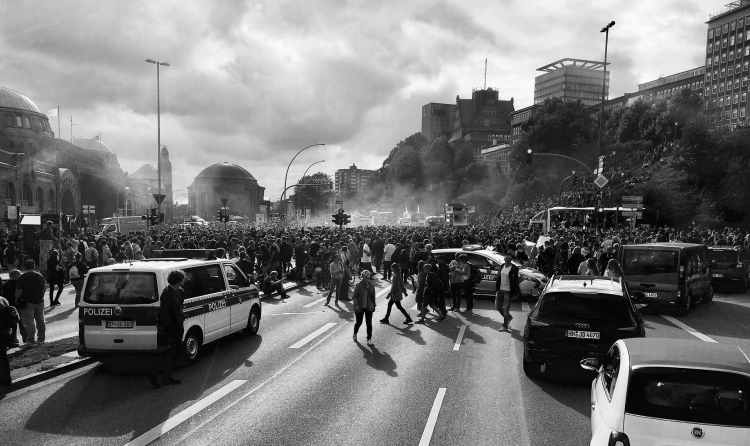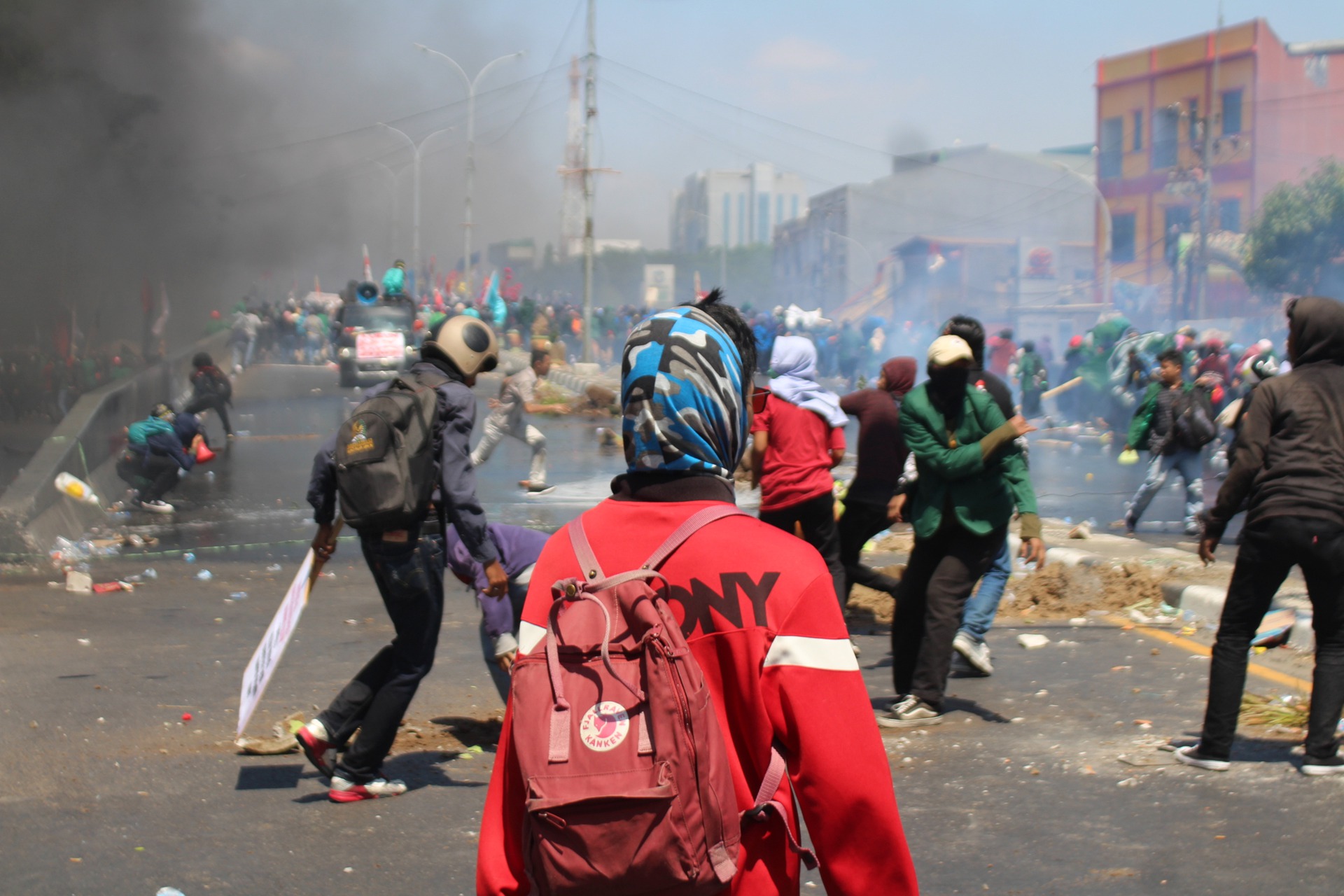How Photos Can Shape a Narrative

The expression "a picture never lies" may be a nice sentiment, but its truthfulness is questionable, especially in the age of social media. With the near-ubiquitous accessibility of camera phones and the internet, a photo can be uploaded online in an instant and, depending on the story, can create, perpetuate, or change a narrative.
This was the case of Paul Ratje's photograph of a Haitian migrant being aggressed by a US Border Patrol agent on horseback. The image shows the agent using horse reins to whip the migrant, quickly recalling American antebellum-like imagery. The photo spread across social media and news outlets, including front pages of newspapers (see below right), prompting President Joe Biden to announce a thorough investigation of the incident. He vowed accountability for the photographed agents stating, "It's outrageous, I promise you, those people will pay."
"I'm pissed, I'm unhappy," said Democratic Representative Maxine Waters. "Cowboys with their reins whipping Black people, Haitians, into the water: What we witnessed is worse than that what we witnessed with slavery."
That photo was all I saw on my Instagram feed that day, and in a reactionary manner, I reposted it myself.
A few days later, however, Ratje spoke to NBC affiliate KTSM and clarified the context of his photograph. He said he never actually saw the agents whipping anyone. "Some of the Haitian men started running, trying to go around the horses, and that's kind of when the whole thing happened. I didn't ever see them whip anybody with the thing," said Ratje. "He was swinging it. But I didn't see him take – whip someone with it. That's something that can be misconstrued when you're looking at the picture."
As a photographer myself, I can attest to moments appearing one way through the viewfinder that is interpreted differently in the eyes of someone else. Such is the nature of anything creative – it is inherently open to interpretation. In the case of photojournalism, it may prove to be a bit more complicated. But despite the inaccuracy of the commentary and the fact that the migrants were still not treated with dignity, this speaks to the level of impact and influence that imagery has on social and political narratives.
Visual culture helps define ourselves and experiences and can construct behaviors and attitudes toward a multitude of issues. For example, footage and photos of the murders of George Floyd, Philando Castile, and many other black men led to protests across the US and around the world. The effects of these images rippled throughout culture and have sped up the work of racial equality, with changes being called for in the police system, diversity in the workplace, and even in how we teach US history.
The bystanders in those incidents had camera phones, a simple device that has dramatically changed who and how photos are taken and distributed. If it weren't for this, it is unlikely that those cultural changes would have occurred at the rate they did.
One should also note how the elements that make a photograph can generate an emotional response – the distance from the subject, lighting, the type of lens being used, the angle at which the photo was taken. For example, Ólafur Steinar Rye Gestsson and Philip Davali conducted a photo experiment on how focal length and angles can change the meaning of a photograph in response to rampant fake news. "I believe we're all aware of the effect of lens compression," said writer and photographer Dunja Djudjic of DIYPhotography.net. "And even those who aren't into photography know how much the angle can change the story. But in the times of crisis, when we're all emotional, it's easy to forget about these things."
Image cred: Shany Kasysyaf, Pixabay
Another problem with the notion of interpretation and the accessibility of digital media is the spread of misinformation. For example, an image circulating the web after Trump's election showed rioters taking to the streets. It was thought that they were anti-Trump and the image was used to vehemently denounce them. As it turns out, the actual photo was taken in 2012 in Greece.
Though critical thinking is never negated, it can feel as if many of us have been conditioned to have emotional responses and make assumptions due to the United States' dark history and its ongoing struggle for racial reconciliation. And it is becoming even harder to think critically because of digital media at our fingertips.
I am sure Ratje did not intend to purposefully misconstrue the meaning of his photograph. He simply snapped it in the moment. But this is a perfect example of the chasm of perspective between photographer and audience in the digital age. And unfortunately, mainstream media tends to exacerbate this and cause more division. For example, some left-leaning news sources ran with this story and used the word "whipped" without consulting the photographer. After the photo was clarified, they grew quiet and altered their arguments. Still, right-leaning sources jumped on the update and were quick to denounce their counterpart's failure to address the clarification, not at all mentioning the lack of humanity for the migrants.
Just as imagery drives narratives, so does society. Because of the interpretation and growth of technology, we also can add meaning to visual culture. Just four years ago, we took over 1 trillion photos. A photo can express one thing, but one's interpretation can give the photo a whole new meaning. Society needs imagery, and imagery needs society.
"I finally understood what a picture can be about –– and it's about responding to a moment that's important to you," said Magnum Photographer Christopher Anderson in a recent interview with the British Journal of Photography. Though he talked about his transition from war photographer to more personal work, this quote still resonates.
We take photos for simply that reason. But beyond that, the interpretation is out of our hands, which can be either beneficial or dangerous.








